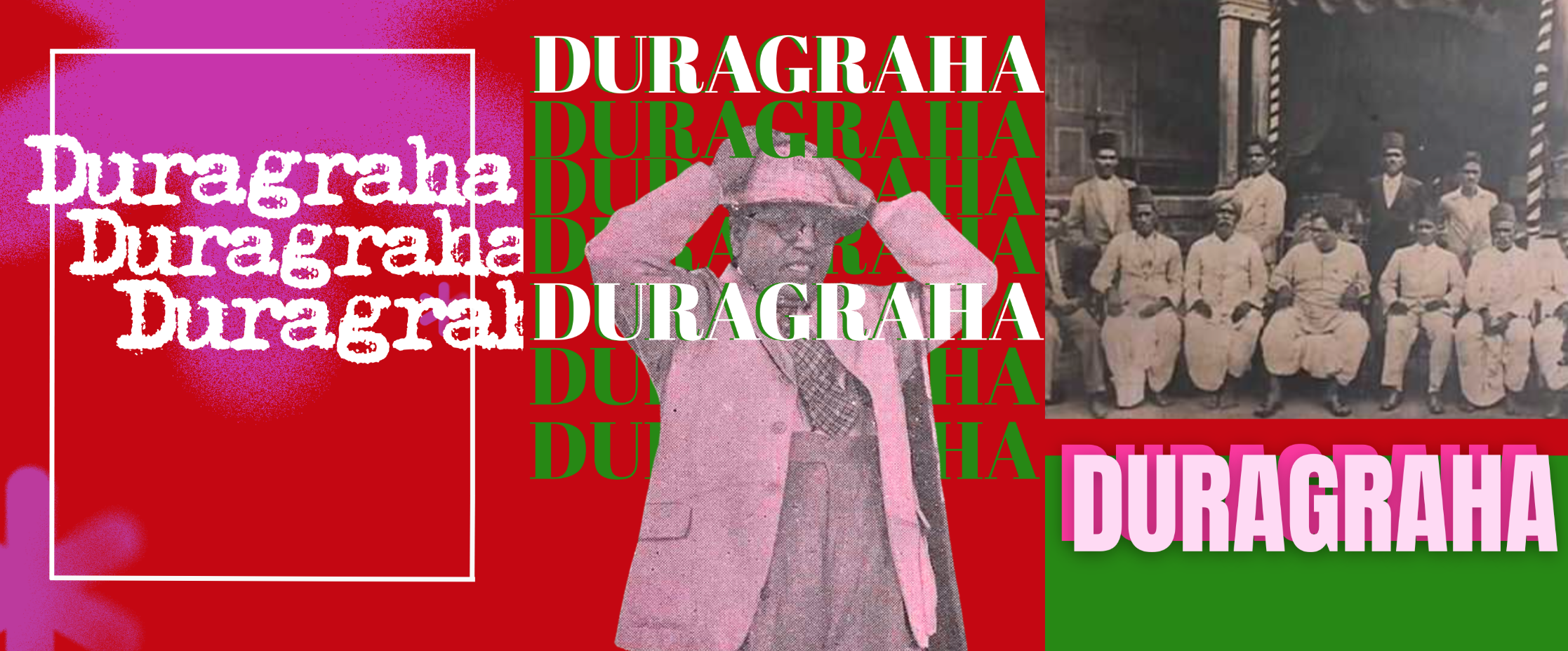ISSUE 02 SUBMISSIONS OPEN
ISSUE 02 SUBMISSIONS OPEN

ABOUT us
Duragraha is an ever growing collection of essays and stories rooted in an understanding that the personal and the political are blended and overlapping. We publish writing that captures this overlap in its many and mutating forms.
Duragraha believes in insolent and impatient resistance to the violent conditions of our world. Writing about resistance may involve writing about forms of oppression and movements against it, and how both unfold privately and collectively. It may also mean writing about navigating daily life as things collapse and are built around us: writing about eating, traveling, dating, reading, watching tv, making friends, hating your job, trying new things — capturing life’s levity and absurdity in the face of systemic violence.
With this in mind, Duragraha aims to build a living archive of writing that documents, critiques, demystifies, or ridicules any and all facets of our current ways of living. We publish fiction and non-fiction, and are open to non-traditional mediums of storytelling.
WHAT IS ‘DURAGRAHA’?
In India, 1923, the Legislative Council of Bombay passed a resolution, the Bole Resolution, that allowed Dalits (or Untouchables) to use public tanks, wells, schools, courts and dispensaries. At the time, Dalits made up about 17% of India’s population, around 42 million people. Dalits continue to experience brutal oppression under hinduism’s caste system: “according to the National Crime Records Bureau, a crime is committed against a Dalit by a non-Dalit every sixteen minutes; every day, more than four Untouchable women are raped by Touchables; every week, thirteen Dalits are murdered”.
The Bole Resolution was a shift in the civil rights afforded to Dalits. In 1927, Dalits in Mahad, India, led by Dalit activist B.R. Ambedkar, organized the Mahad Conference in an effort to claim their new rights. The conference followed the principles of Satyagraha, non-violent protest, as popularized by Mohandas Gandhi. On the second day of the conference, 3,000 Dalits marched peacefully to the town’s local water tank (previously reserved only for privileged castes) and drank from it. They were met almost immediately with violent backlash from a privileged caste mob. At the behest of local orthodox hindus, a judge in the town issued an injunction legally preventing Dalit’s from accessing the water tank. In response, the Dalits organized a second conference, and 10,000 Dalits gathered to continue to demand access to public spaces.
Gandhi responded to these demands by urging Dalits to fight for their rights with “sweet persuasion and not by Satyagraha which becomes Duragraha when it is intended to give rude shock to the deep-rooted prejudices of the people”. Gandhi described Duragraha as a “devilish force”and the polar opposite of Satyagraha, “soul force”. Gandhi wanted Dalits to plead patiently for their rights, to avoid shocking or inconveniencing their oppressors, and to make a persuasive argument for their humanity.
Duragraha is the impatient and anguished response to Satyagraha; it is a rude awakening of the oppressive class and caste. Duragraha recognizes the truth in Frantz Fanon’s assertion: “Decolonization is always a violent phenomenon”. Duragraha proudly embraces ‘devilish force’, and forcefully demands to be seen and heard.
